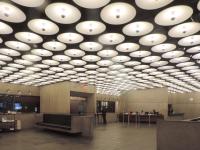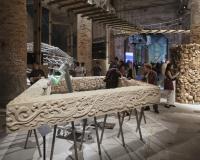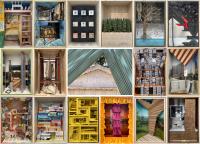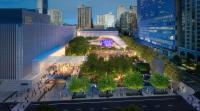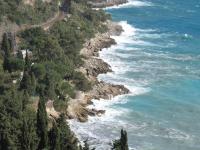West Side Strategy, a part for the whole - urban research
Dublin, Ireland, 2012
The western side of Dublin’s city center has the change to become a vibrant and pulsating part of the city, giving quality to its ordinary urban pattern and transforming decaying neighborhoods into new local centralities and attractive districts to live in. This localized urban enrichment, a soft strategy to revolutionized but maintain the existing fabric and city’s identity, could be the starting point of a sustainable development that will reflect on the whole metropolitan area.
Over the last few decades, Dublin has undergone a relevant densification of its urban fabric. Different strategies have been applied to the various parts of the city, each one leaving some unsolved problems behind that now need to be rethought in order to design a sustainable future for the city. The issues of the urban sprawl in the metropolitan area and the lack of high quality public spaces in many central areas are still present. To invert the urban phenomenon of low density housing in the suburbs, high density satellites districts have been built over the last few decades. This urban concept, overlapped to the suburban patterns, hasn’t had a great success and many residential and commercial spaces are still unsold. At the same time, due to the current financial crisis, the Dublin Docklands development has not been completed and many already built structures are not occupied.What might be the next step after the Docklands development, considering that the architecture cannot solve the financial problems? How can we redirect the population spread from the metropolitan surrounding to the urban centre? This research project indirectly deals with these issues and proposes a new identity for the West Side of the Dublin’s centre - spanning from the Liberties to Grangegorman - building a system of public spaces as the main structure for small housing densification projects.
Dublin’s city centre is relatively small but includes derelict zones, abandoned old industries and dilapidated buildings in its West Side. There are some potentials that make this forgotten part of the centre a strategic place where to start a regenerative urban process: the West Side is cheaper than the eastern centre; the changes produced by the public facilities can easily be absorbed by its malleable urban pattern; small investments can be made in the existing blocks and may result in a great economic return due to their proximity to the historical centre.
A regenerative urban process of the West Side could be the way to move from a polarised city to a city with homogeneous intensity throughout its urban fabric. This wouldn’t be a reproduction of the historical centre but rather a place focused on day-to-day living. The West Side is characterized by a large number of pliable blocks that can be involved in a process of renovation. Contrary to the East Side, with its well established blocks and its system of public squares and its urban scale functions, the West Side has to be transformed to become another high quality space in the heart of the city. The project underlines the existing main functions and identifies new potential spaces to host the new ones. The requalification of the actual net of streets and the introduction of new links could provide a new system of streets transversal to the River Liffey, creating an independent structure for this part of the centre. The urban densification inside the centre of Dublin has to be made alongside a proper system of public and collective spaces. The pliable blocks are the places where the private estates can be developed enriching the city with small collective gardens, little squares and walking paths. The choise to live in an apartment building, refusing to live in a detached house, can be easily addressed only if there are high-quality urban spaces next to the building: public gardens and playgrounds instead of small backyards, underground parking lots instead of front door parking, local services within walking distance. Starting from typical urban sections of the western side of Dublin, this research project formulates various densification scenarios that are differently combined in relationship with the urban contexts and its public surfaces. The project’s aim is to reinforce the public urban structure and at the same time to provide collective spaces and facilities for new housing buildings, while also transforming the existing roads from simple mobility lines into pillars of an elaborate system of open space surfaces.

- クライエント
- RIAI (Royal Institute of Architects of Ireland) and EFAP (European Forum for Architectural Policies)
- チーム
- Nicola Russi, Angelica Sylos Labini, Emanuela Bartolini, Alessandro Benetti, Pietro Ferrario, Giulia Celentano, Simone Zanni








